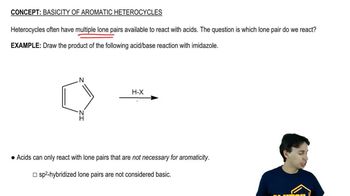For each of the following compounds, draw the important resonance forms. Indicate which structures are major and minor contributors or whether they have the same energy.
(g)
(h)
 Verified step by step guidance
Verified step by step guidance Verified video answer for a similar problem:
Verified video answer for a similar problem:



 3:34m
3:34mMaster The rules you need for resonance: with a bite sized video explanation from Johnny
Start learning